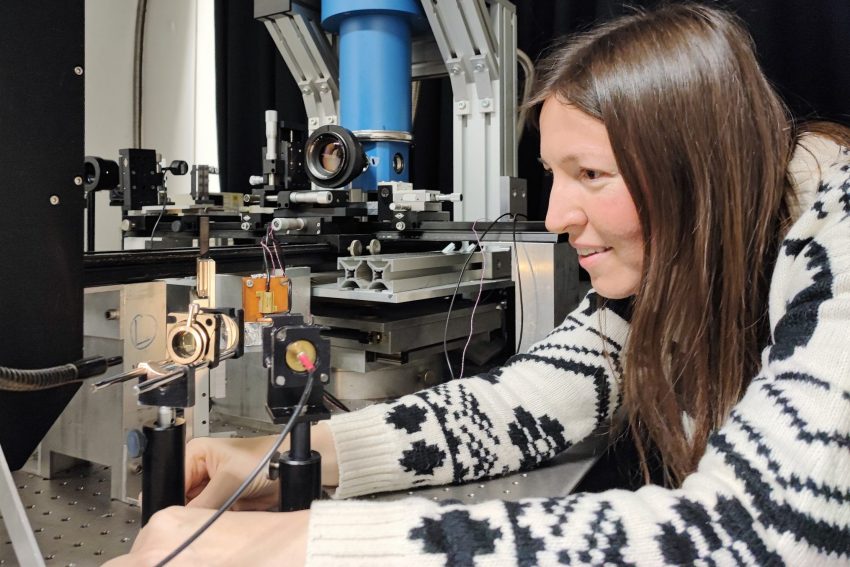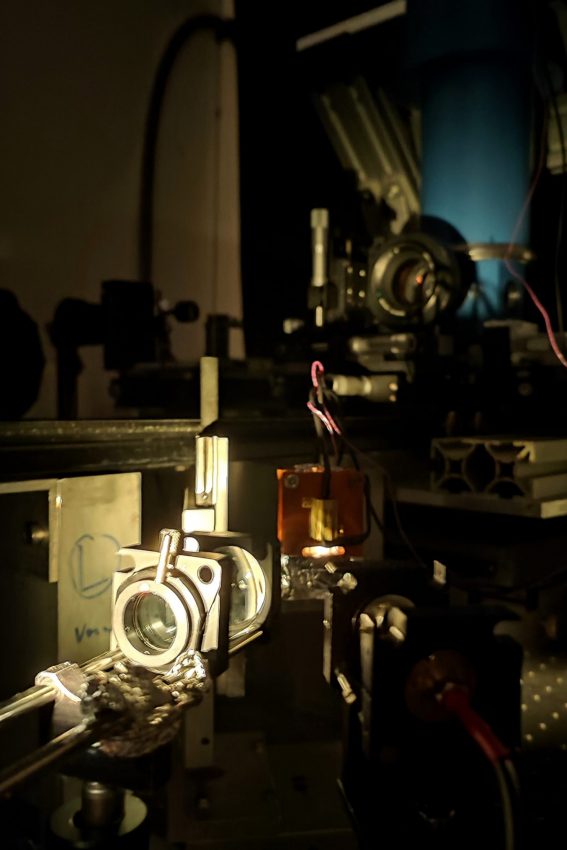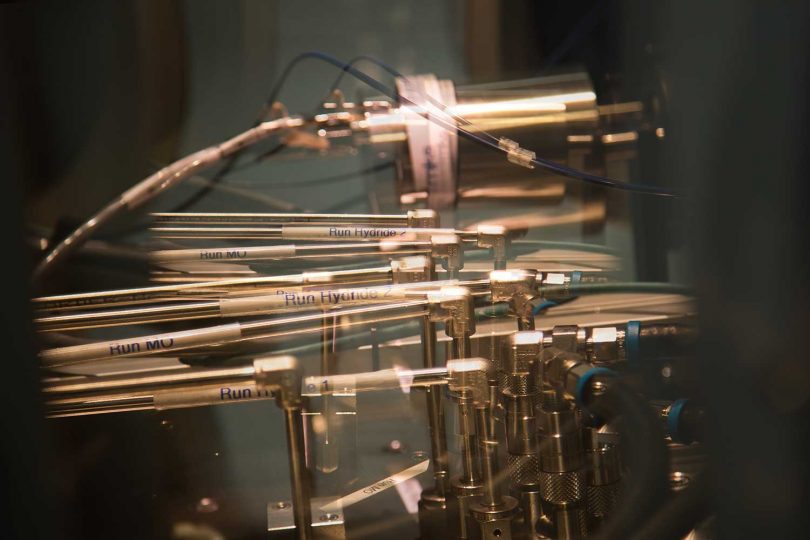Twisted light opens up new insights Doctoral student Silvia Müllner on her journey towards the limits of the measurable
Silvia Müllner first wanted to become a scientist when she was still at primary school. What sounds straightforward turned out to be a path of life with many challenges over the years. After studying Physics at Technische Universität Braunschweig, she is currently researching how light couples better to molecules by means of a special twist. Within the Cluster of Excellence QuantumFrontiers, these experiments help to better understand the angular momentum of light. On the other hand, future technologies such as optimised solar cells and optical sensors can also benefit from this.

Doctoral student Silvia Müllner explores light and matter with a special twist. Photo credit: Laurenz Kötter/TU Braunschweig
“Oh, that sparks!” In a small Austrian village, the literal spark of realisation jumps to four-year-old Silvia Müllner. As her big brother strikes sparks with a hammer and stone, she wonders, “Where is the light suddenly coming from?” This enthusiasm for natural sciences and ‘what’s happening here?’ has accompanied her to this day. A blow of fate in her family at an early age and financially difficult times thwarted her direct path towards her dream job as a scientist. Something more tangible was needed. “I decided to study in Canada for a short time so that I could teach English. Teaching had always appealed to me and English promised to be the language of science that would allow me to make my way,” says Silvia Müllner. Seven years followed in Chile, during which optics always played an important role, even as an amateur astronomer. With her savings, she returned to Europe – to a not too big city with a university with strong optics research: Braunschweig. With light you can actually move things, change things and do fascinating experiments.
The courage to get up again
However, at the age of 32, it takes courage to start studying again and a lot more motivation to complete your studies. Silvia Müllner pulled through: first a Bachelor’s, then a Master’s and now she’s in the last third of her doctorate. Of course, she is going her own way, which also means starting a family and being there for a child. She starts her doctorate with a focus on materials science, switches to an area with time-resolved optics of semiconductors, and finally finds her calling in a very current topic on the interaction of light with molecules. This variety of methods and fields of work helps her discover new things and understand connections.
“Even though it was very long and bumpy: now everything seems to be going the right way. After overcoming many obstacles, I feel the joy of what I have achieved even more strongly. When something in the lab works out and shines brightly, I become the child again who marvelled at the sparks of the hammer blow with wide eyes back then. I want to pass this on to other students and, of course, to my child.
“Twisted Light”

Small and large set-up: First, the samples go through a preliminary test to find the appropriate parameters. Then the sample is examined in detail with Raman spectroscopy. Photo credit: Laurenz Kötter/TU Braunschweig
As a doctoral student, Silvia Müllner is researching the so-called chirality of light. Light not only has a polarisation, but as an electromagnetic wave it also has a phase. This phase can be changed depending on time and place, thus creating a new twist. This “twisted light” penetrates matter like a spiral and creates special effects when matter itself also has chirality. This twist in light and matter is not only a topic in physics. Whether life sciences, information transfer or energy materials: they all benefit from this research, which links such different areas of the natural sciences and opens up new possibilities for analytics.
In her first publication with international visibility, Silvia Müllner showed that chiral molecules with twisted light behave surprisingly like liquids without energy loss.Since then, she has been working on optimising the effect more and more and making it more usable.
With her research on the fundamentals, Silvia Müllner is opening up new paths for various applications. Microscopes, nano-optics and solar cells rely on light-matter interactions and can benefit accordingly from improvements. “My experiments also show that the torque of light can be transferred to matter. With this twisted light, we thus have another degree of freedom to move and sort objects depending on their chirality.”
To further advance this fundamental research, Silvia Müllner would like to stay in research after her PhD (expected in September 2024) and follow her dream of learning and teaching. “I want to pass on my own fascination and get more people interested in physics.”

